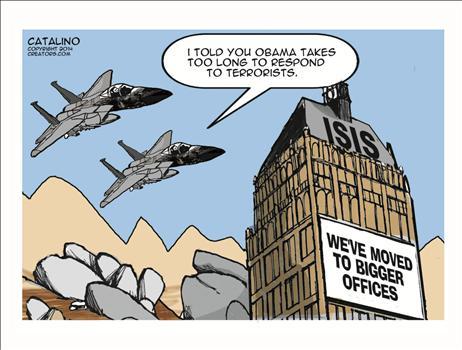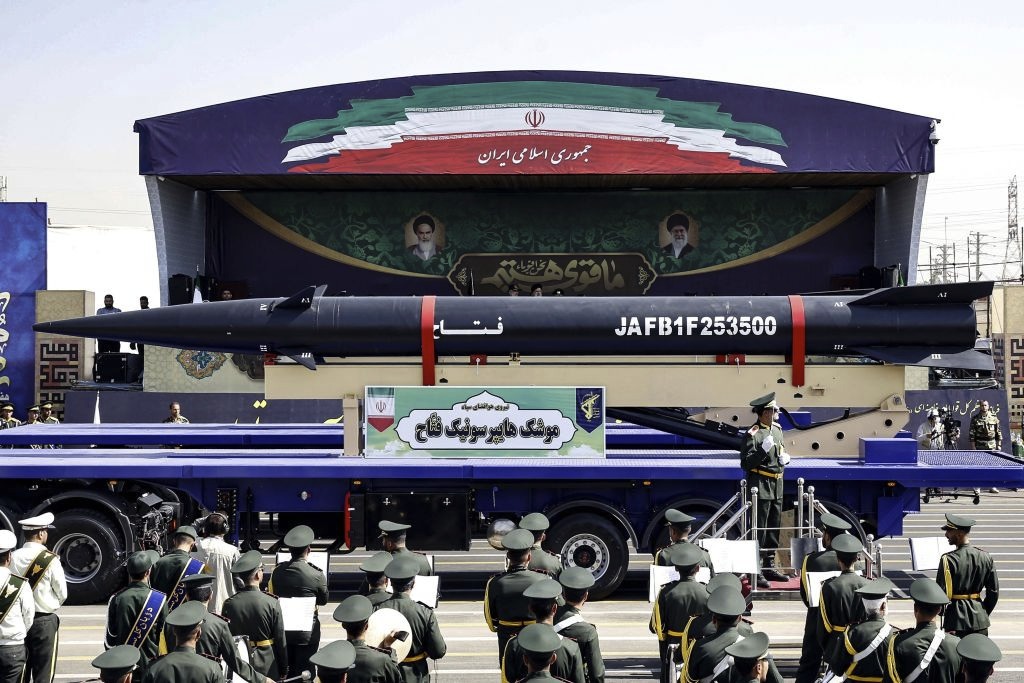The “Islamic Inquisition” and the Blasphemy Police
Douglas Murray/Gatestone Institute/October 13/15
There is a small but undeniable number who are willing to kill and sometimes die in the cause of imposing their idea of blasphemy on non-Muslims around the world.
The editors signalled that they had had enough of the threats and enough of the danger. They censored themselves.
Today there might be thousands of people willing to publish cartoons of Mohammed on their Twitter accounts, but most of them hide behind aliases and complain about the cowardice of others.
Our societies like to think that terrorism and intimidation do not work. They do — or can — but only if we let them.
Ten years ago, one of the editors of a Danish newspaper called Jyllands-Posten had heard that that no cartoonist in Denmark would depict Islam’s prophet for a set of children’s books on the major world religions. Did such self-censorship really exist in modern Denmark? He sought to find out. So he published a spread of twelve cartoons intended to depict the founder of Islam.
Attacks on the newspaper followed — the most outspoken attempt at enforcing censorship since the death threats against Salman Rushdie for his novel, The Satanic Verses, in 1988, and the murder of Theo van Gogh for his film, Submission, in 2004. The knife in van Gogh’s back also went through a note demanding death threats for Ayaan Hirsi Ali, a Dutch MP at the time, and the Dutch MP, Geert Wilders.
Some of the cartoons printed by Jyllands-Posten led to attacks on the newspaper for having printed them. Some of the cartoons did not even feature Mohammed at all. One, of a Mohammed-like figure with a bomb in his turban, became famous. Local Danish Imams, disappointed at the relative beigeness of the cartoons, added more offensive cartoons of their own to a portfolio, and toured the Middle East with this, trying to whip up anger against Denmark. As many remember, the incitement worked. For a time, aside from all the looting, burnings and murders, the whole world seemed transfixed on these cartoons and what the reactions to them might mean.
Across a number of countries, there were independent outbreaks of mini cartoon-crises. The decision of Ezra Levant to stand alone and publish the cartoons in Canada led to a North American branch of the cartoon crisis. The decision of a number of Norwegian newspapers to print the cartoons, in solidarity with their neighbours, led to a Norwegian cartoon crisis. And, of course, in Paris, the decision of a single magazine — Charlie Hebdo — to continue depicting any and all historical figures, led to the slaughter of ten journalists and two police officers in the magazine’s Paris offices in January this year.
Stéphane Charbonnier, the fearless editor and publisher of Charlie Hebdo, who was murdered on January 7 along with many of his colleagues, is shown here in front of the magazine’s former offices, just after they were firebombed in November 2011.
Now is probably as good a time as any to ask a few questions — not least, whether we have learned anything at all. Certainly, non-Muslims around the world have learned a great deal more about Islamic sensibilities when it comes to depictions of their Prophet. From within Muslim communities in Europe and elsewhere, there has been a demonstration that there is a small but undeniable number who are willing to kill and sometimes die in the cause of imposing their idea of blasphemy on non-Muslims around the world.
Aside from the attempts on the lives of the staff of Jyllands-Posten, there have been attempts on the life of the Danish cartoonist Kurt Westergaard and the Swedish cartoonist who drew a Mohammed cartoon in solidarity after the first Danish cartoons, Lars Vilks. There have been countless other knocks on the door by the blasphemy police. In London, the publisher of a fawning book about the love life of Mohammed (The Jewel of Medina by Sherry Jones) narrowly survived an attempt to firebomb his offices. If there was a single place on earth that one might have thought could be immune from a visit by the Islamic Blasphemy Police it would probably be somewhere in Texas. But earlier this year, when a display of Mohammed cartoons in took place in Garland, the assassins turned up anyway, and were, fortunately, shot.
So, one lesson is that perhaps nowhere on earth is now safe from the Islam’s most stringent enforcers. They can crop up in remote parts of Scandinavia or in the heartland of America. They can show up at a newspaper office or at an individual’s home. And it is in this realization that the clearest lesson of the last decade has been learnt.
Last week, on the anniversary of the publication of the first Mohammed cartoons, Jyllands-Posten republished the original spread. The page and texts were laid out as they had been on that famous day ten year earlier. But one thing was missing: the cartoons. Where the original images had been — even the ones that did not depict Mohammed — there were only blank spaces. What had been possible in 2005 was no longer possible in 2015. One can hardly blame the publishers. After ten years of paying for security, and staff having to work in perhaps the most threatened newspaper office on earth, the editors of Jyllands-Posten signalled that they had had enough of the threats and enough of the danger. They censored themselves.
It took only ten years for most people across the West to learn about Islamic blasphemy — and in the end to abide by it. Today there might be thousands of people willing to publish cartoons of Mohammed on their Twitter accounts, but most of them hide behind aliases and complain about the cowardice of others.
A few days before the Mohammed cartoons’ anniversary, Mark Steyn, Henryk Broder and the Norwegian editor Vebjoern Selbekk addressed a conference in Denmark to commemorate the anniversary of the cartoons. It was held in the Danish Parliament, the only building there now deemed safe enough to withstand the now-traditional attack from the Islamic Blasphemy Police. Anticipating a terrorist attack, the UK Foreign Office and U.S. State Departments both warned their citizens to stay away from the area of the Parliament building that day. The restaurant in which we were meant to be having dinner cancelled the booking; they realized, when police and security officers scouted out the building in advance, who the guests might be.
Ten years ago, you could publish depictions of Mohammed in a Danish newspaper. Ten years later, it is hard for anyone who has been connected with such an act to find a restaurant in Copenhagen that will serve them dinner.
It is not just artists and writers who have learned the lesson; it is everyone — from newspaper conglomerates to the people who serve food in restaurants. Our societies like to think that terrorism and intimidation do not work. They do — or can — but only if we let them. Over the last ten years, a couple of brief eruptions of sanctimonious point-missing aside, it turned out to be fear — not Mohammed cartoons — that went viral.
Freedom, however, was never defended by more than a handful of people. Most prefer their comforts and a quiet life to anything that looks like a fight. But there are still more than a few good people across the world, and more than a handful of them in Scandinavia. If, in previous conflicts, one looked to pilots or statesman to lead the way, in this war against the new “Islamic Inquisition,” it is journalists, cartoonists, writers and artists who find themselves on the front lines and who need to lead. Some of them might be surprised to be in this position. They should not be. Freedom of expression and thought have always had vicious enemies. But the truth has always seen them off, and shall do again.






















